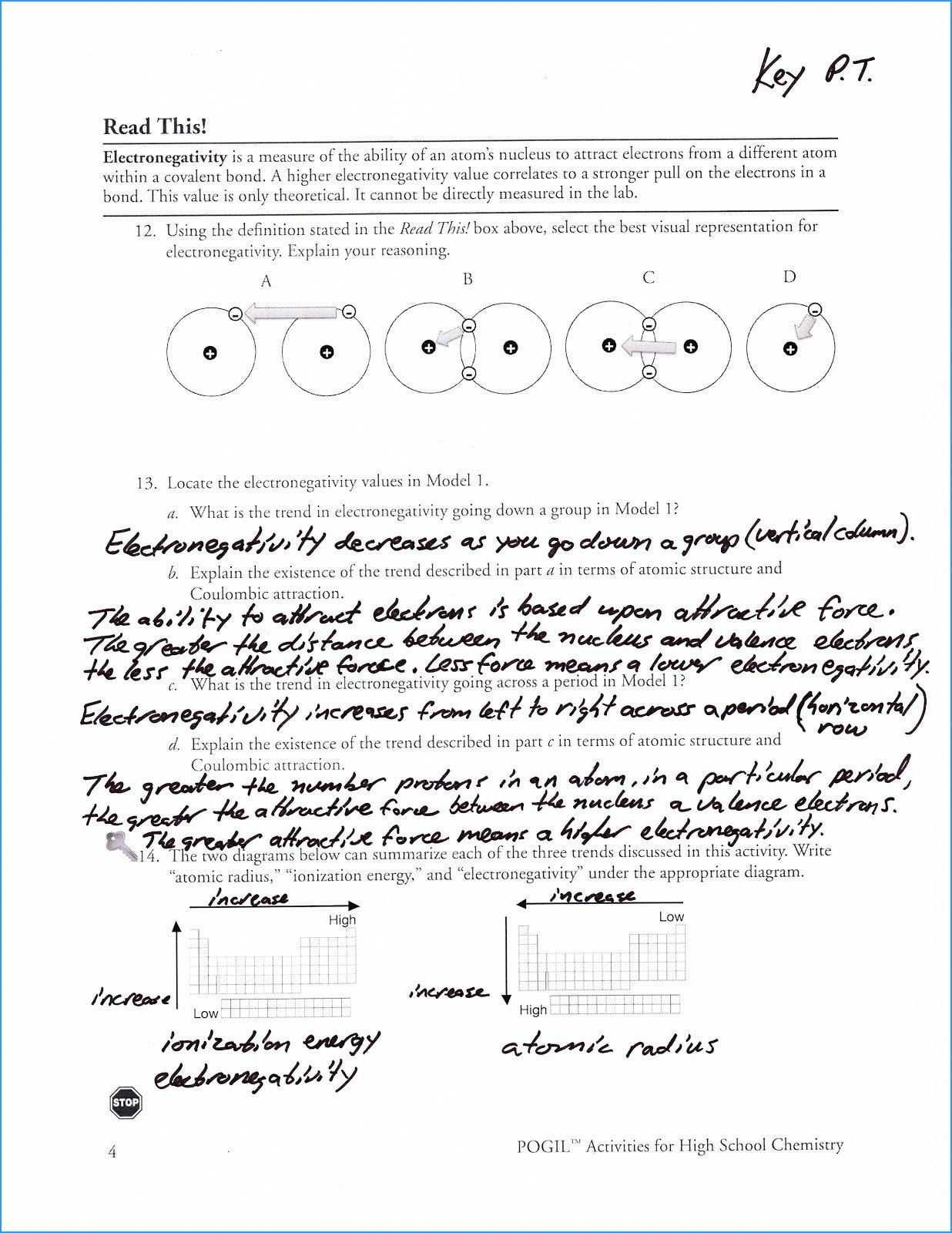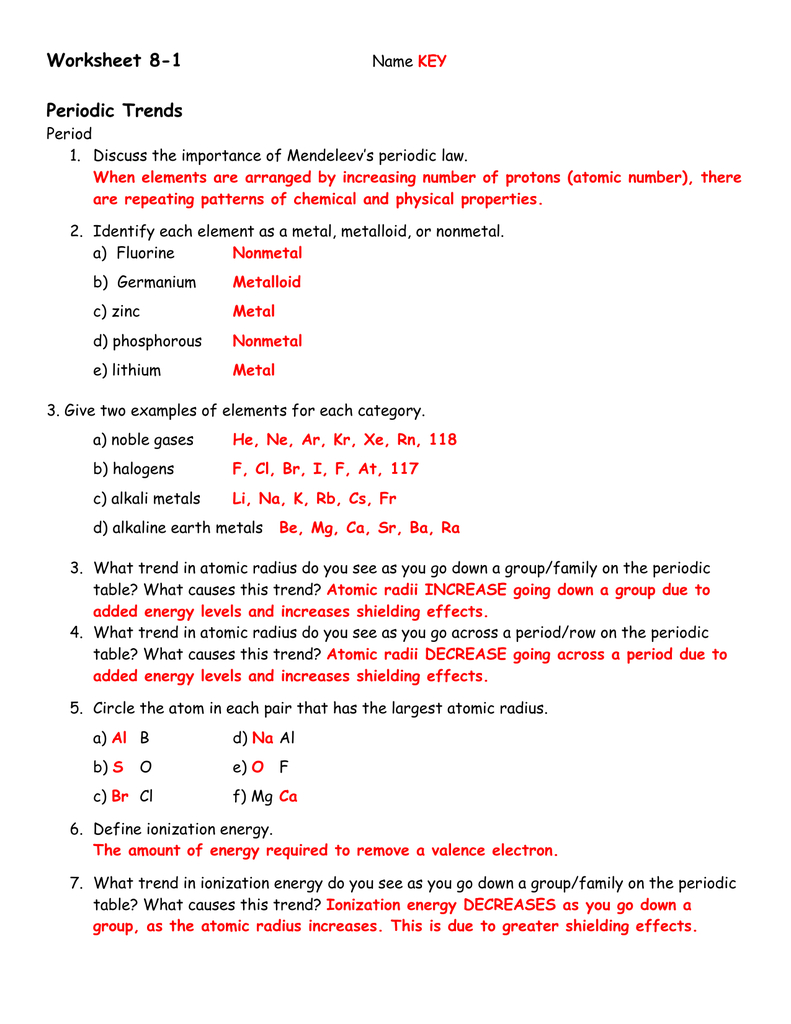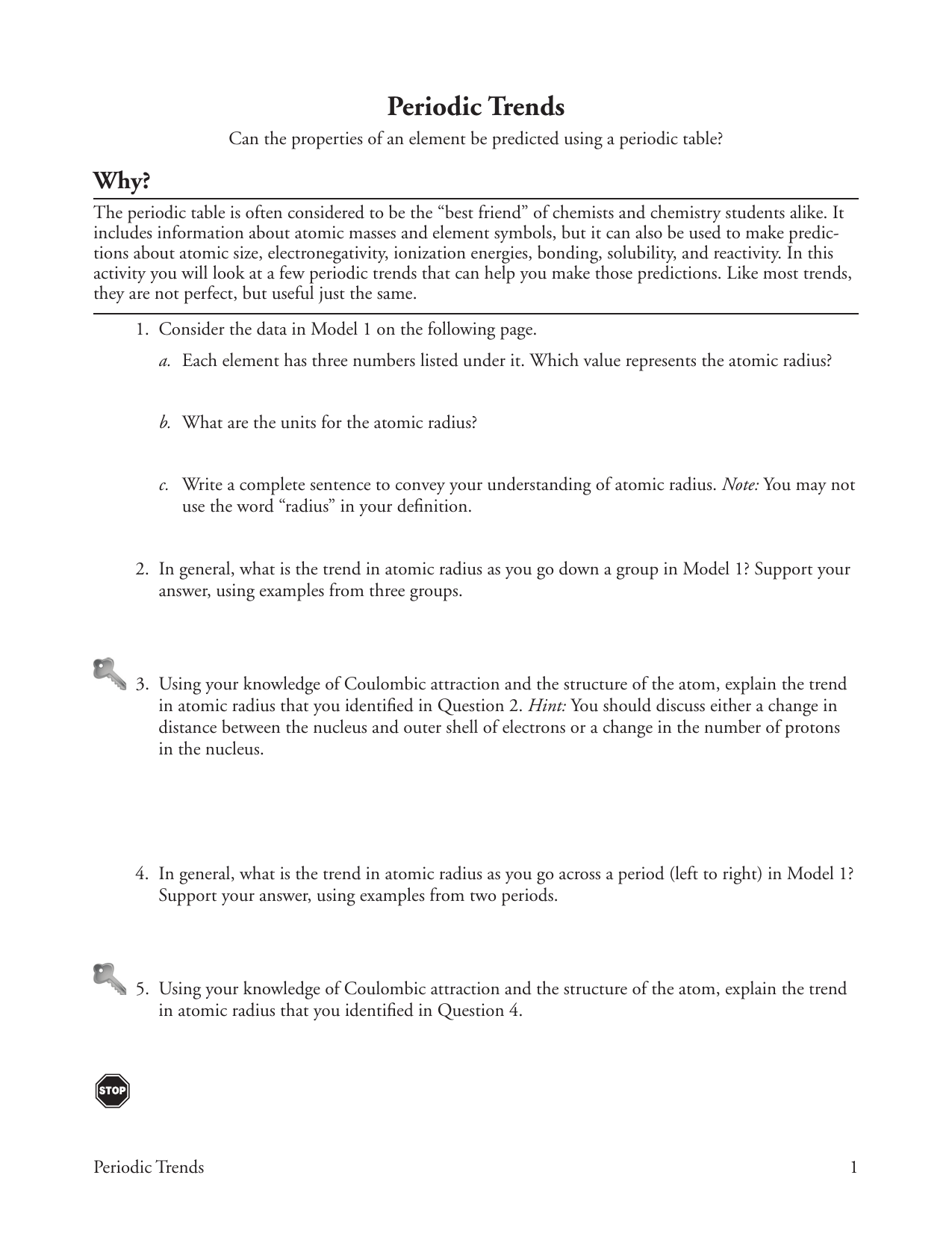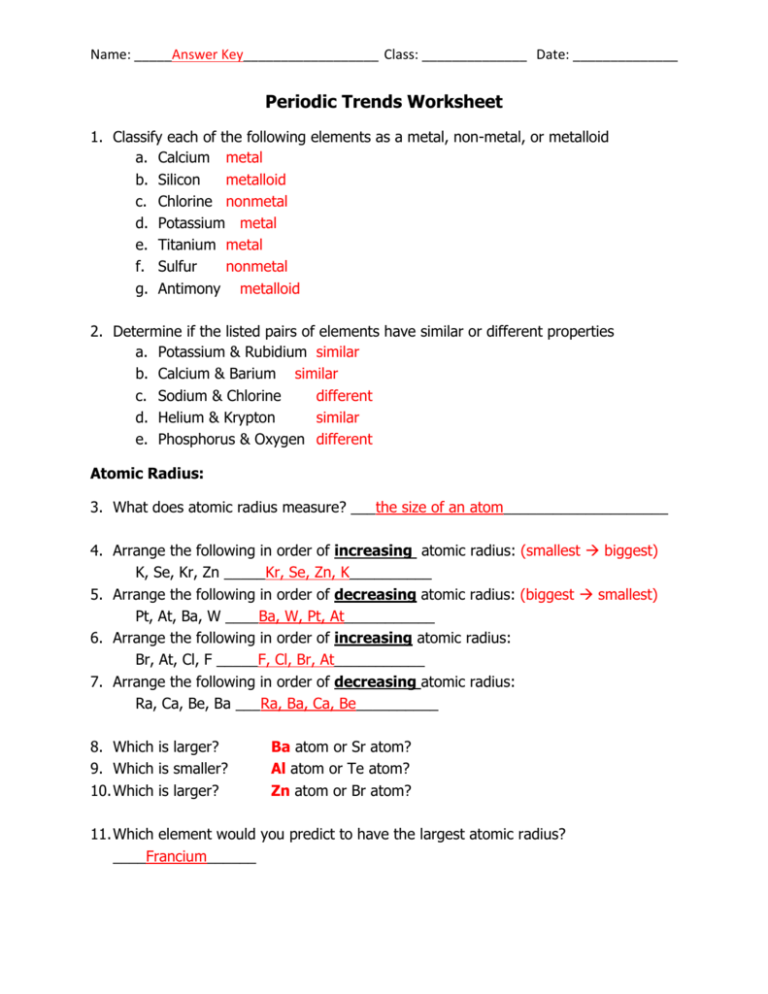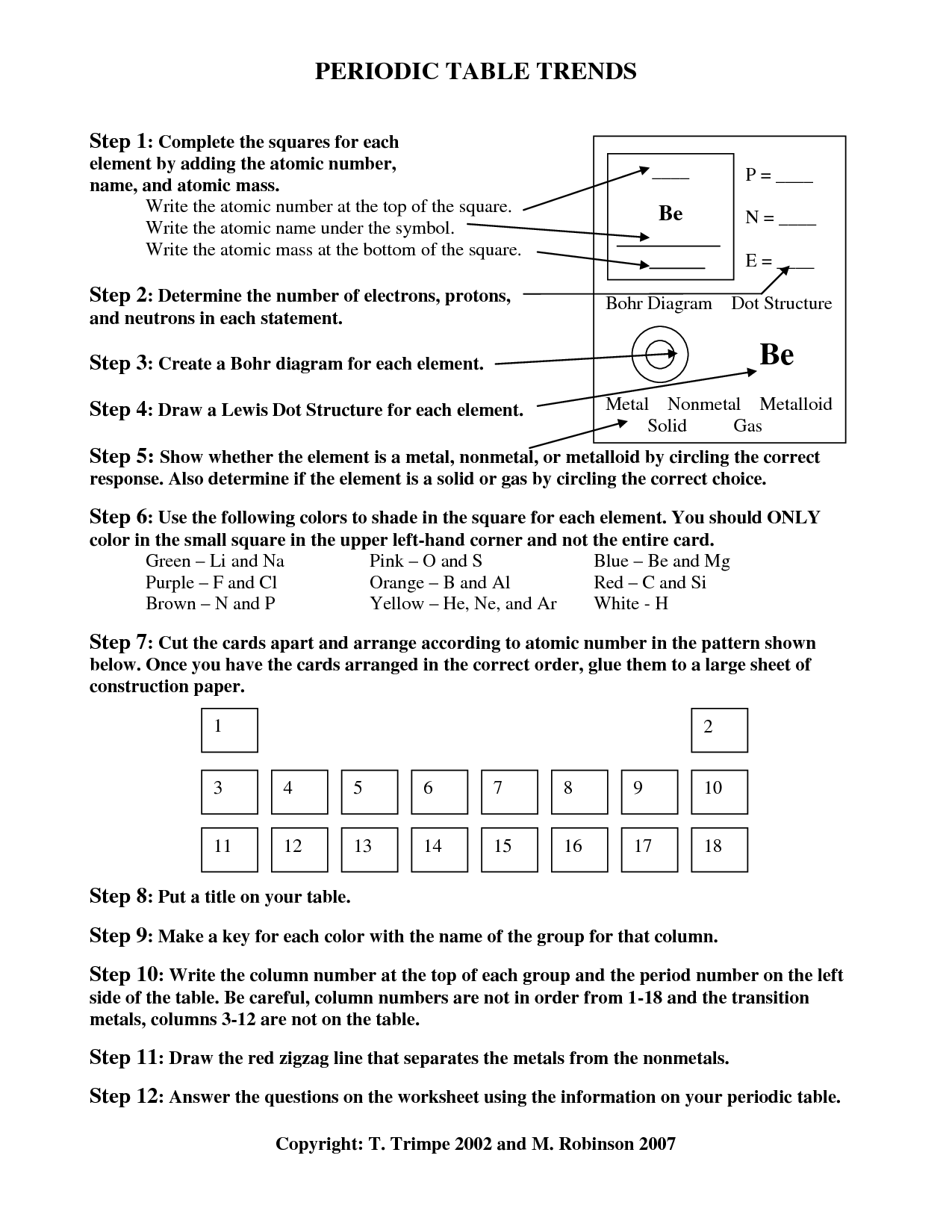Periodic Trends Worksheet 1 Answer Key
Periodic Trends Worksheet 1 Answer Key - Web explain the trends involving ionization energy, atomic radii, and electronegativity that are evident in the various groups and periods of the periodic table. Atomic radius for each of the following sets of atoms, rank the atoms from smallest to largest atomic radius. Periodic trends summary worksheet here. Use your notes to answer the following questions. A periodic table is a tabular arrangement of chemical elements. Atomic radius for each of the following sets of atoms, rank the atoms from smallest to largest atomic radius. The periodic table part 2 answer key. This includes information on its atomic number,. Web as the elements of group 1 on the periodic table are considered in order of increasing atomic radius, the ionization energy of each successive element generaliy (a) decreases. 4.8 (4 reviews) rank the following elements by increasing atomic radius: Web as the elements of group 1 on the periodic table are considered in order of increasing atomic radius, the ionization energy of each successive element generaliy (a) decreases. Atomic radius for each of the following sets of atoms, rank the atoms from smallest to largest atomic radius. Web explain the trends involving ionization energy, atomic radii, and electronegativity that. A periodic table is a tabular arrangement of chemical elements. Atomic radius for each of the following sets of atoms, rank the atoms from smallest to largest atomic radius. Atomic radius for each of the following sets of atoms, rank the atoms from smallest to largest atomic radius. Give your best and most concise explanation of the following trends: This. A periodic table is a tabular arrangement of chemical elements. Periodic trends summary worksheet here. Web advanced periodic trends pogil worksheet here. Atomic radius for each of the following sets of atoms, rank the atoms from smallest to largest atomic radius. The activity series answer key. Al, cl, ga cli ionic radius for each of the following sets of ions, rank them from smallest to largest ionic radius. Web explain the trends involving ionization energy, atomic radii, and electronegativity that are evident in the various groups and periods of the periodic table. The periodic table part 2 answer key. Rank the following elements by increasing atomic. Web as the elements of group 1 on the periodic table are considered in order of increasing atomic radius, the ionization energy of each successive element generaliy (a) decreases. Al, cl, ga cli ionic radius for each of the following sets of ions, rank them from smallest to largest ionic radius. This includes information on its atomic number,. Add to. Web explain the trends involving ionization energy, atomic radii, and electronegativity that are evident in the various groups and periods of the periodic table. Give your best and most concise explanation of the following trends: Web as the elements of group 1 on the periodic table are considered in order of increasing atomic radius, the ionization energy of each successive. \pu {2672 kj/mol} 2672 kj/mol, because the electron. In this investigation you will examine several periodic trends, including atomic radius, ionization energy and ionic. Add to my workbooks (16) download file. A periodic table is a tabular arrangement of chemical elements. Periodic trends summary worksheet here. Add to my workbooks (16) download file. \pu {2672 kj/mol} 2672 kj/mol, because the electron removed during the third ionization is a core electron. Give your best and most concise explanation of the following trends: Web the periodic table trends worksheet 1 answer key also provides a detailed breakdown of each element's properties. Atomic radius for each of the following. The periodic table part 2 answer key. In this investigation you will examine several periodic trends, including atomic radius, ionization energy and ionic. Web the periodic table trends worksheet 1 answer key also provides a detailed breakdown of each element's properties. The activity series answer key. Atomic radius for each of the following sets of atoms, rank the atoms from. This includes information on its atomic number,. 4.8 (4 reviews) rank the following elements by increasing atomic radius: Atomic radius for each of the following sets of atoms, rank the atoms from smallest to largest atomic radius. Give your best and most concise explanation of the following trends: The activity series answer key. 1.) describe what a periodic table is. Atomic radius for each of the following sets of atoms, rank the atoms from smallest to largest atomic radius. A periodic table is a tabular arrangement of chemical elements. It decreases as you go from. Add to my workbooks (16) download file. The activity series answer key. Al, cl, ga cli ionic radius for each of the following sets of ions, rank them from smallest to largest ionic radius. A period also often helps to. This includes information on its atomic number,. Web the periodic table trends worksheet 1 answer key also provides a detailed breakdown of each element's properties. Rank the following elements by increasing atomic radius: Web as the elements of group 1 on the periodic table are considered in order of increasing atomic radius, the ionization energy of each successive element generaliy (a) decreases. Web key periodic trends worksheet atomic radius 1. Atomic radius for each of the following sets of atoms, rank the atoms from smallest to largest atomic radius. In this investigation you will examine several periodic trends, including atomic radius, ionization energy and ionic. 4.8 (4 reviews) rank the following elements by increasing atomic radius: Use your notes to answer the following questions. Web advanced periodic trends pogil worksheet here. Give your best and most concise explanation of the following trends: \pu {2672 kj/mol} 2672 kj/mol, because the electron removed during the third ionization is a core electron. Web explain the trends involving ionization energy, atomic radii, and electronegativity that are evident in the various groups and periods of the periodic table. The periodic table part 2 answer key. 1.) describe what a periodic table is. A period also often helps to. Rank the following elements by increasing atomic radius: A) there is a general trend in atomic radius across the table; 4.8 (4 reviews) rank the following elements by increasing atomic radius: \pu {2672 kj/mol} 2672 kj/mol, because the electron removed during the third ionization is a core electron. In this investigation you will examine several periodic trends, including atomic radius, ionization energy and ionic. \pu {2672 kj/mol} 2672 kj/mol, because the electron. Web advanced periodic trends pogil worksheet here. Calculation of kc and kp. Web the periodic table trends worksheet 1 answer key also provides a detailed breakdown of each element's properties. Give your best and most concise explanation of the following trends: Mg , si b.mg , ca , ba c. Add to my workbooks (16) download file.NEW PERIODIC TABLE BASICS WORKSHEET PDF Periodic
Periodic Trends Worksheet Answers Pogil
Periodic Trends Worksheet Answer Key —
Periodic Table Worksheet Answer Key Quiz Worksheet The Periodic Table
️Coulombic Attraction Worksheet Answers Free Download Goodimg.co
8 Pics Trends Of The Periodic Table Worksheet Part 1 Answer Key And
Periodic Trends Worksheet Answer Key Homemadeal
Periodic Trends Worksheet
Periodic Table Worksheet Page 2 of 2
20 Best Images of Periodic Trends Worksheet Answers Key Periodic
Atomic Radius For Each Of The Following Sets Of Atoms, Rank The Atoms From Smallest To Largest Atomic Radius.
Use Your Notes To Answer The Following Questions.
It Decreases As You Go From.
Al, Cl, Ga Cli Ionic Radius For Each Of The Following Sets Of Ions, Rank Them From Smallest To Largest Ionic Radius.
Related Post:


